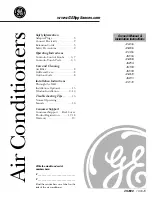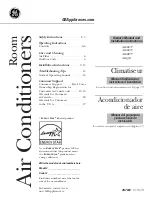
8 Configuration
Installer reference guide
48
EBLQ+EDLQ011~0W1 + EK(2)CB07CAV3
Daikin Altherma low temperature monobloc
4P538847-1 – 2018.05
#
Code
Description
[A.2.2.F.2]
[C-09]
Alarm output
Indicates the logic of the alarm output on
option box EK2CB07CAV3 during a
malfunction.
▪ 0 (Normally open)(default): The alarm
output will be powered when an alarm
occurs. By setting this value, a
distinction
is
made
between
malfunctioning and detection of a
power failure of the unit.
▪ 1 (Normally closed): The alarm output
will NOT be powered when an alarm
occurs. This installer setting allows for
a distinction between the detection of
an alarm, and the detection of a power
failure.
Also see the table below (Alarm output
logic).
[A.2.2.F.3]
[D-08]
Optional external kWh meter 1:
▪ 0 (No): NOT installed
▪ 1: Installed (0.1 pulse/kWh)
▪ 2: Installed (1 pulse/kWh)
▪ 3: Installed (10 pulse/kWh)
▪ 4: Installed (100 pulse/kWh)
▪ 5: Installed (1000 pulse/kWh)
[A.2.2.F.4]
[D-09]
Optional external kWh meter 2:
▪ 0 (No): NOT installed
▪ 1: Installed (0.1 pulse/kWh)
▪ 2: Installed (1 pulse/kWh)
▪ 3: Installed (10 pulse/kWh)
▪ 4: Installed (100 pulse/kWh)
▪ 5: Installed (1000 pulse/kWh)
#
Code
Description
[A.2.2.F.5]
[C-08]
External sensor (indoor):
When an optional external ambient
sensor is connected, the type of the
sensor must be set. See
"5 Application
guidelines" on page 12
.
▪ 0 (No): (default) NOT installed. The
thermistor in the user interface and in
the outdoor unit are used for
measurement.
▪ 1 (Outdoor sensor): Remote outdoor
sensor, connected to the outdoor unit.
The outdoor sensor will be used to
measure
the
outdoor
ambient
temperature.
Remark:
For some
functionality, the temperature sensor
in the outdoor unit is still used.
▪ 2 (Room sensor): Remote indoor
sensor, connected to option box
EK2CB07CAV3.
The
temperature
sensor in the user interface is NOT
used anymore.
Remark:
This value
has only meaning in room thermostat
control.
INFORMATION
You can only connect either the remote indoor sensor or
the remote outdoor sensor.
#
Code
Description
[A.2.2.F.6]
[D-04]
PCC by digital inputs:
▪ 0 (No)
▪ 1 (Yes)
8.2.4
Quick wizard: Capacities (energy
metering)
The capacities of all electrical heaters must be set for the energy
metering and/or power consumption control feature to work properly.
When measuring the resistance value of each heater, you can set
the exact heater capacity and this will lead to more accurate energy
data.
#
Code
Description
[A.2.3.1]
[6-02]
Booster heater: Only applies to domestic
hot water tanks with an internal booster
heater (EKHW). The capacity of the
booster heater at nominal voltage.
Nominal value is 3 kW. Default: 3 kW.
Range: 0~10 kW (in steps of 0.2 kW)
[A.2.3.2]
[6-03]
BUH: step 1: The capacity of the first
step of the backup heater at nominal
voltage. Nominal value 3 kW. Default:
3 kW.
Range: 0~10 kW (in steps of 0.2 kW)
8.2.5
Space heating/cooling control
The basic required settings in order to configure the space heating/
cooling of your system are described in this chapter. The weather-
dependent installer settings define the parameters for the weather-
dependent operation of the unit. When weather-dependent operation
is active, the water temperature is determined automatically
depending on the outdoor temperature. Low outdoor temperatures
will result in warmer water and vice versa. During weather-
dependent operation, the user has the possibility to shift up or down
the target water temperature by a maximum of 5°C.
See the user reference guide and/or operation manual for more
details about this function.
Leaving water temperature: Main zone
#
Code
Description
[A.3.1.1.1]
N/A
LWT setpoint mode:
▪ 0 (Fixed)
The
desired
leaving
water
temperature is:
▪ NOT weather-dependent (i.e. does
NOT depend on the outdoor
ambient temperature)
▪ fixed in time (i.e., NOT scheduled)
▪ 1 (Weather dep.) (default): The
desired leaving water temperature is:
▪ weather-dependent (i.e. depends
on
the
outdoor
ambient
temperature)
▪ fixed in time (i.e., NOT scheduled)
continued >>
















































